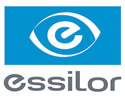
Sessão de Trabalhos Científicos - Apresentação Oral
Código
TL024
Área Técnica
Uveites / AIDS
Instituição onde foi realizado o trabalho
- Principal: Universidade de São Paulo (USP)
Autores
- RUY FELIPPE BRITO GONCALVES MISSAKA (Interesse Comercial: NÃO)
- Marcelo Mendes Lavezzo (Interesse Comercial: NÃO)
- Viviane Mayumi Sakata (Interesse Comercial: NÃO)
- Fernanda Maria Silveira Souto (Interesse Comercial: NÃO)
- Celso Morita (Interesse Comercial: NÃO)
- Cintia Kanenobu (Interesse Comercial: NÃO)
- Smairah Frutuoso Abdallah (Interesse Comercial: NÃO)
- Maria Kiyoko Oyamada (Interesse Comercial: NÃO)
- Carlos Eduardo Hirata (Interesse Comercial: NÃO)
- Joyce Hisae Yamamoto (Interesse Comercial: NÃO)
Título
IMPACT OF IMMUNOSUPPRESSION ON INFLAMMATORY SIGNS IN VOGT-KOYANAGI-HARADA DISEASE (VKHD) – A 24-MO FOLLOW-UP
Objetivo
To evaluate the impact of immunosuppressive therapy (IMT) on inflammatory signs in VKHD
Método
11 women (22 eyes) diagnosed with acute VKHD and prospectively followed for a minimum 24-mo were systematically evaluated with clinical, posterior segment inflammatory imaging exams (fluorescein and indocyanine green angiographies and enhanced depth optical coherence tomography with Spectralis HRA+OCT) and full-field electroretinogram (ffERG) with RETIportsystem. All patients were treated with methylprednisolone pulsetherapy followed by oral prednisone (1mg/Kg/d) with slow tapering and systemic IMT (azathioprine; mofetil mycophenolate in refractory and/or intolerant cases). Ideal dose of IMT was achieved before M4 in 5 patients (45.5%) and between M4 and M7 in 6 patients (54.5%). Eyes were categorized in 2 different groups based on scotopic ffERG parameters variation ≥30% between M12-M24: worsening or stable group. Descriptive statistics, Fisher exact and Mann-Whitney tests were used to analyze data. This study was approved by the Institutional Ethics Committee and followed the Helsinki declaration
Resultado
Mean age at diagnosis was 34y and mean time from symptoms till treatment was 28d. Eyes were categorized as worsening in 36.4% and as stable in 63.6%. Anterior chamber cells (ACC) and posterior segment inflammation were detected in 8 eyes (36.4%) and in 22 eyes (100%) respectively during the 24-mo follow-up. Dark dots (DD) scores significantly reduced in early IMT group in comparison to late IMT group (Figure 1); a higher DD score at M18 was related with a worse function based on ffERG (p=0.002). Later treatment start was related with more clinical/subclinical signs: ACC (p=0.001); ACC fluctuation (p=0.009) and perivascular leakage (p=0.007). Greater pleocytosis (p=0.038) was related with worsening ERG parameters
Conclusão
IMT impacted positively on inflammation and on ffERG parameters but didn’t completely eliminate clinical and subclinical signs during 24-mo follow-up
63º Congresso Brasileiro de Oftalmologia
4 a 7 de setembro de 2019 | Windsor Convention & Expo Center Barra da Tijuca | Rio de Janeiro | RJ | Brasil
ANVISA: 25352012367201880









